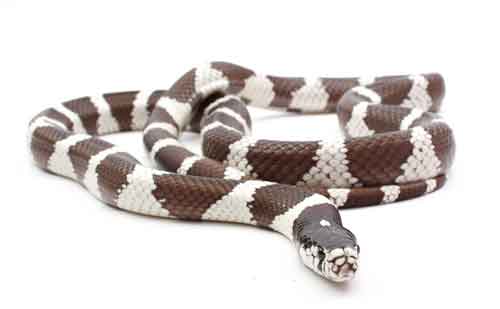Initial findings show the California kingsnake sliding on lubed up belly scales.
We know snakes are not slimy but are rather smooth and some can be downright slippery. But did you know how they move about easily without any real damage to their bellies?

joe baio
The fat cells on the left are orderly while those on the right are not.
Scientist Joe Baio at Oregon State University and zoologist Stanislav Gorb at the University of Kiel in Germany found that, at least in the case of the California kingsnake (Lampropeltis getula californiae), the skin of the kingsnake differs widely from its belly to its back, and while both sets of scales have a thin film of grease on their surface, it is the belly scales that are most intriguing. The belly scales have lipid modules that are arranged in a very orderly fashion, apparently helping the snake move by lubricating the skin to reduce the amount of friction to slow it down.
"The argument we're making is, everything else looks the same; the morphology and the roughness looks the same. The only thing we can find that's different, is the chemistry at the surface,” Baio told the BBC.

gina cioli
The scales on the belly of the California kingsnake differ from those on its back.
Another scientist and snake expert, Prof. Bruce Jayne of the University of Cinnicinnati was equally intrigued by the notion that the skin is lubricated but is unsure if the fat layer tells the entire story. He thinks if the lubrication is not helping the snake to move about, it may help the snake’s scales from drying out.
Baio, a chemical engineer, presented his findings at the AVS Symposium in San Jose, Calif. a meeting of scientists that study surfaces. He thinks that his findings could hep engineers create new paints and coatings with low friction capabilities which would help protect those surfaces from wear.
John Virata keeps a western hognose snake, a ball python, two corn snakes, a kingsnake, and two leopard geckos. His first snake, a California kingsnake, was purchased for $5. His first pet reptile was a green anole that arrived in a small box via mail order. Follow him on Twitter @johnvirata



